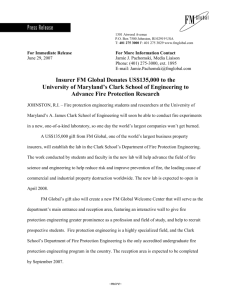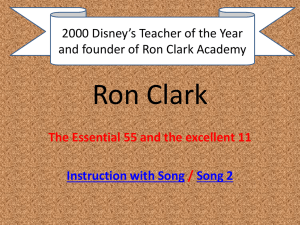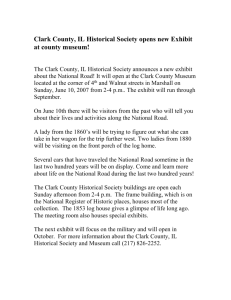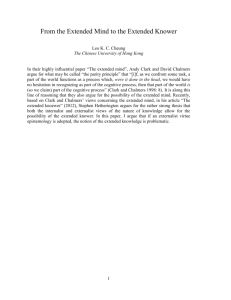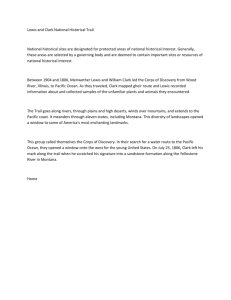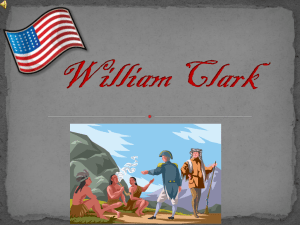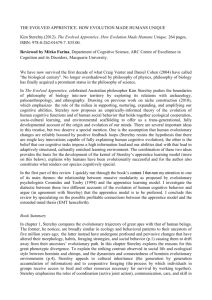Final Exam Study Guide - UCSD Distributed Cognition and Human
advertisement
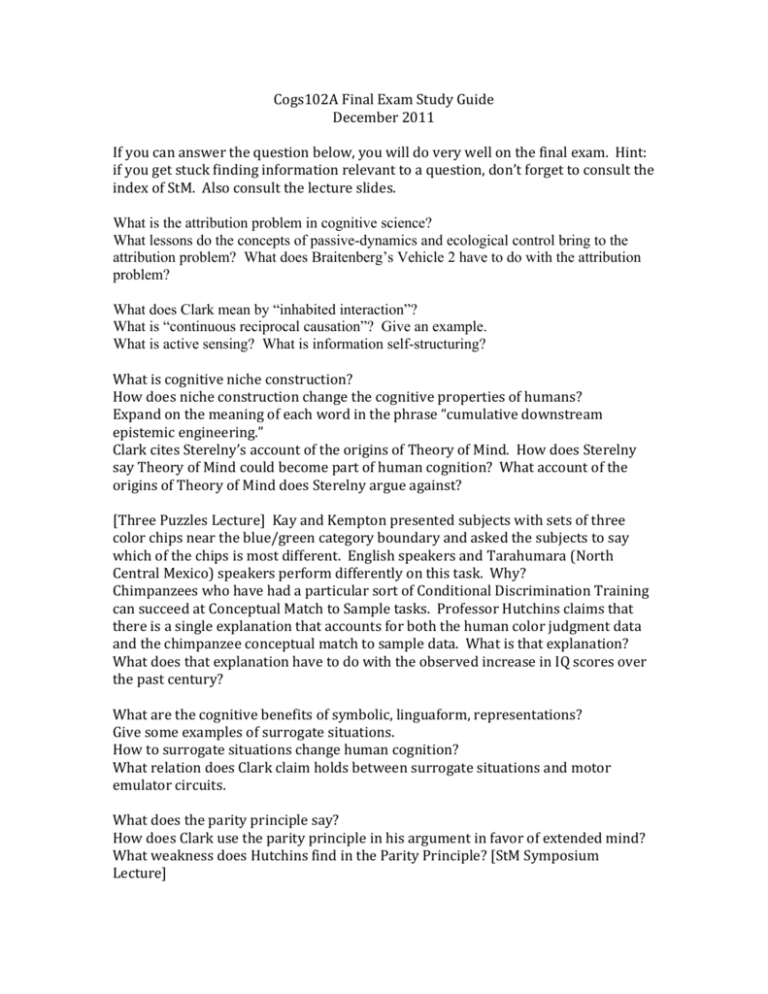
Cogs102A Final Exam Study Guide December 2011 If you can answer the question below, you will do very well on the final exam. Hint: if you get stuck finding information relevant to a question, don’t forget to consult the index of StM. Also consult the lecture slides. What is the attribution problem in cognitive science? What lessons do the concepts of passive-dynamics and ecological control bring to the attribution problem? What does Braitenberg’s Vehicle 2 have to do with the attribution problem? What does Clark mean by “inhabited interaction”? What is “continuous reciprocal causation”? Give an example. What is active sensing? What is information self-structuring? What is cognitive niche construction? How does niche construction change the cognitive properties of humans? Expand on the meaning of each word in the phrase “cumulative downstream epistemic engineering.” Clark cites Sterelny’s account of the origins of Theory of Mind. How does Sterelny say Theory of Mind could become part of human cognition? What account of the origins of Theory of Mind does Sterelny argue against? [Three Puzzles Lecture] Kay and Kempton presented subjects with sets of three color chips near the blue/green category boundary and asked the subjects to say which of the chips is most different. English speakers and Tarahumara (North Central Mexico) speakers perform differently on this task. Why? Chimpanzees who have had a particular sort of Conditional Discrimination Training can succeed at Conceptual Match to Sample tasks. Professor Hutchins claims that there is a single explanation that accounts for both the human color judgment data and the chimpanzee conceptual match to sample data. What is that explanation? What does that explanation have to do with the observed increase in IQ scores over the past century? What are the cognitive benefits of symbolic, linguaform, representations? Give some examples of surrogate situations. How to surrogate situations change human cognition? What relation does Clark claim holds between surrogate situations and motor emulator circuits. What does the parity principle say? How does Clark use the parity principle in his argument in favor of extended mind? What weakness does Hutchins find in the Parity Principle? [StM Symposium Lecture] Describe Clark’s “Hippo-­‐world” thought experiment. What lesson does Clark want us to draw from the “Hippo-­‐world” thought experiment? Describe the Principle of Ecological Balance. Describe the Principle of Ecological Assembly. Describe each of the following hypotheses: (Review Ch 6 of StM. Be sure you can distinguish the hypotheses.) Hypothesis of Extended Cognition Hypothesis of Embedded Cognition Hypothesis of Organism-­‐Centered Cognition Hypothesis of Cognitive Impartiality What does “sensorimotor contingency” mean? What are some virtues of the Strong Sensorimotor Model? Reflecting on the case of Otto and Inga, Clark notes that the coupling between Otto and his notebook is provided by language. He then says, “Language, thus construed, is not a mirror of our inner states, but a complement to them” (StM:232). Why does Clark bother to claim that language is not a mirror of our inner states? According to Noë (as cited by Clark) what makes visual experience visual? At the end of StM, Clark suggests a conceptual flip for the sciences of mind. He says this flip will lead us to stop doing something. What is it we will stop doing?


